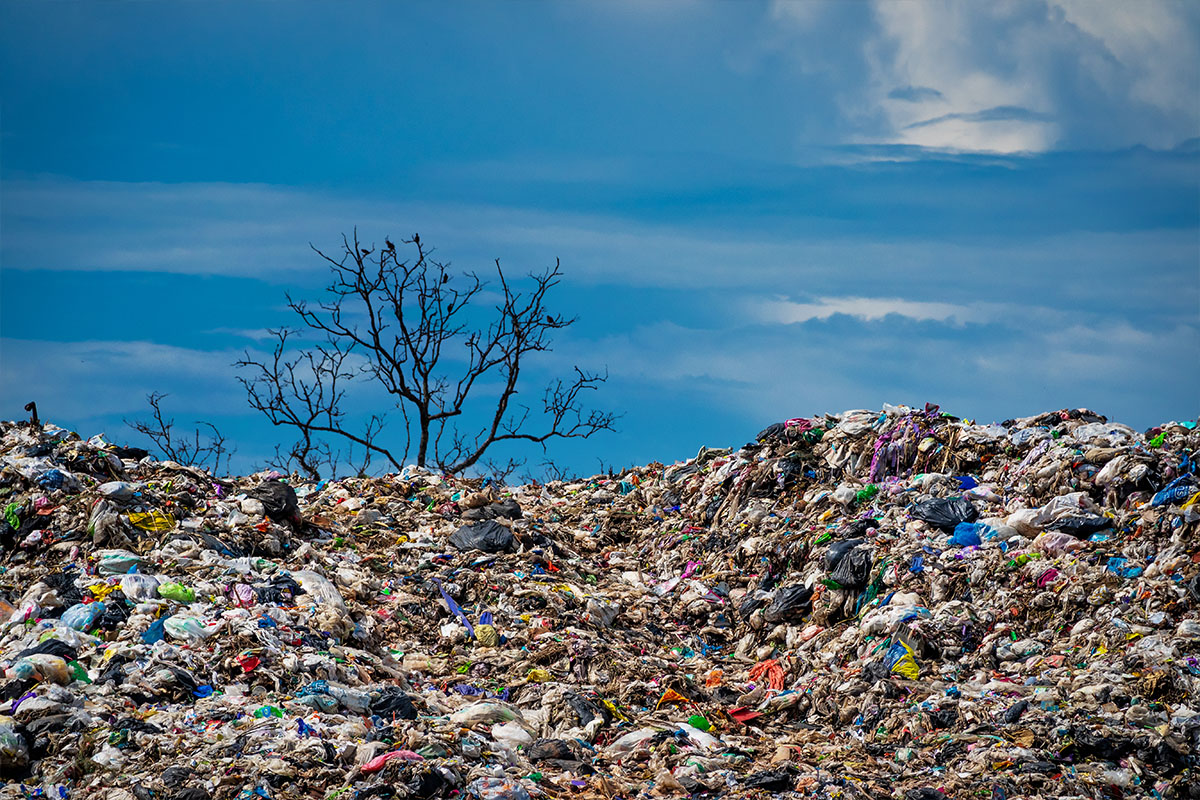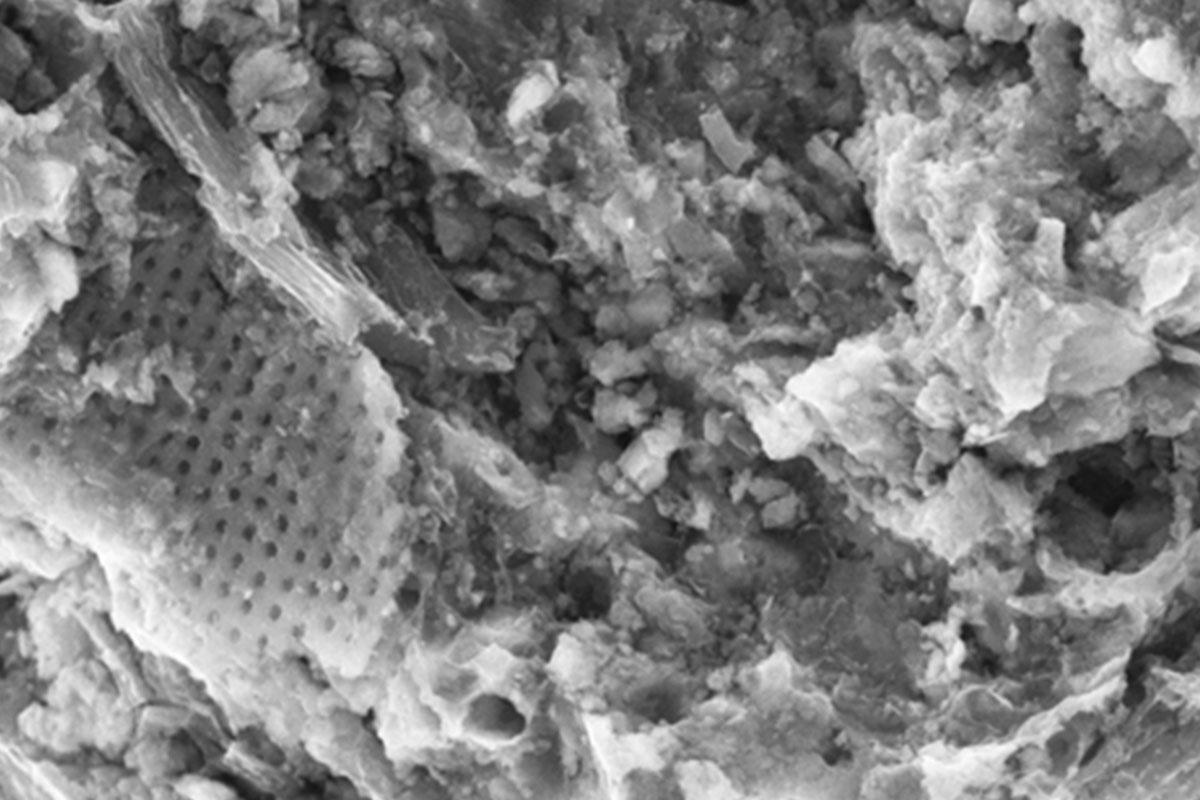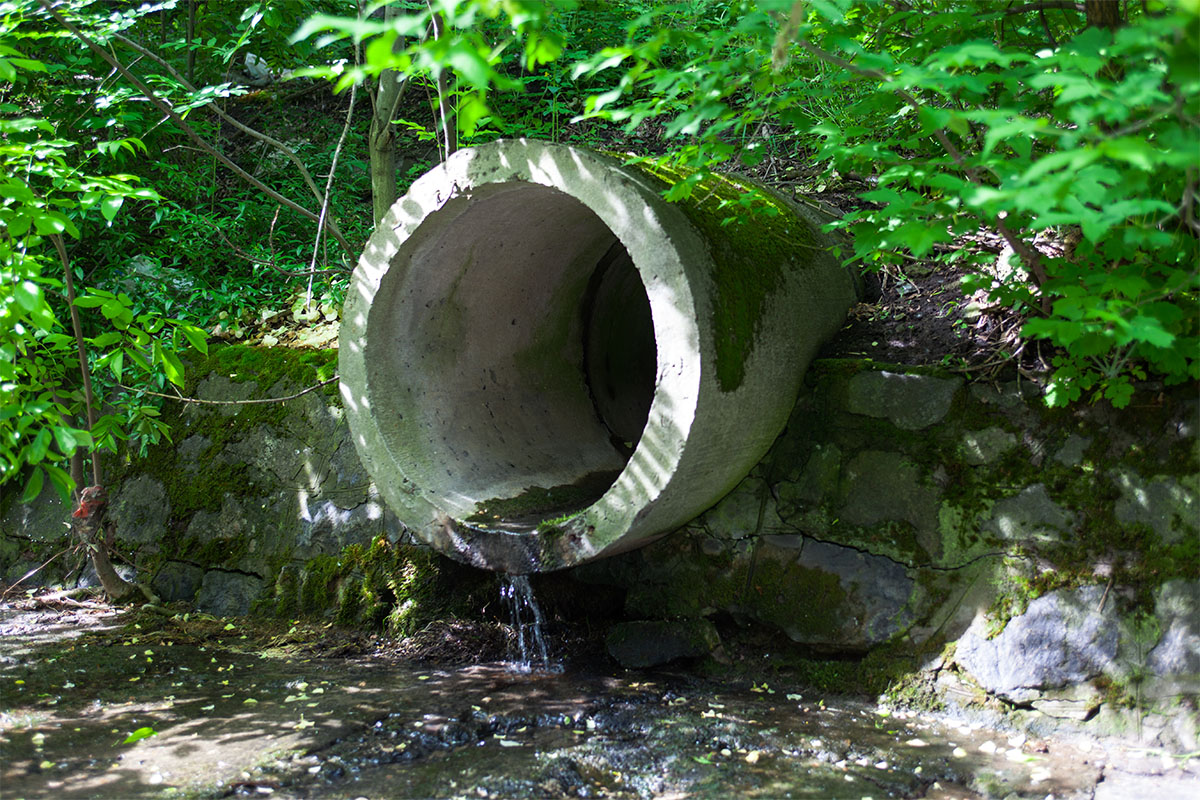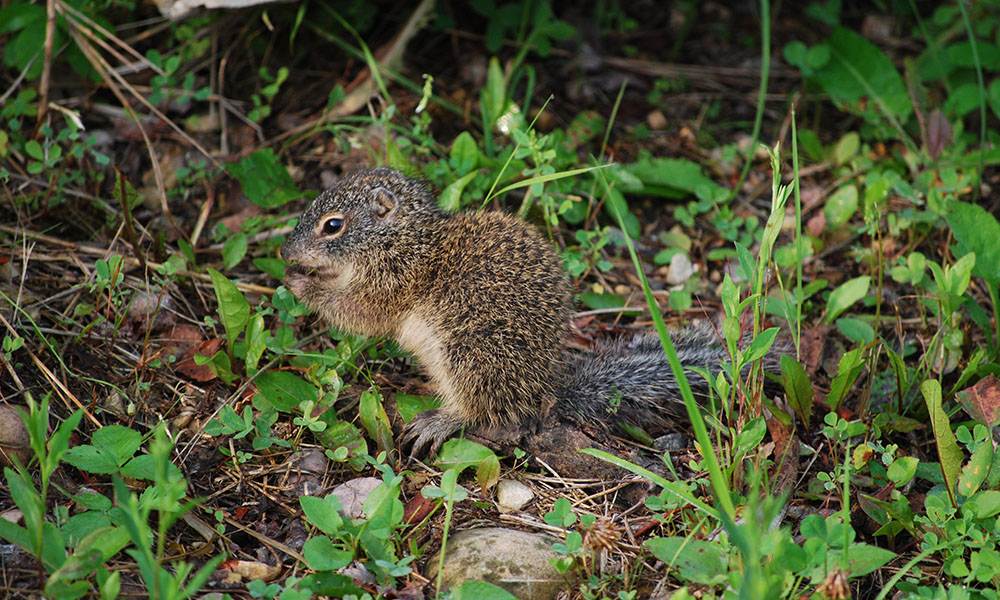Whether doing the dishes, getting to school or work, making meals, or heating and cooling our homes, people use power – a lot of it.
Burning fossil fuels and trees is the single most significant contributor to the climate crisis and is changing our planet in irreversible ways. So is the mess we make. Humans are creating more waste than ever – fast fashion and tossing out our leftovers are some of the biggest contributors to pollution.
As a species, we’re messy.
“It doesn't matter what we do; we have an environmental impact,” says Dr. Roland Lee, an associate professor in the Department of Physical Sciences.
Managing that impact – and cleaning up our messes – is no small task. But many MacEwan profs are taking up the challenge. Here, four researchers share their research into innovative ways we can lean on science to help tidy up everything from clothing in our landfills to microplastics and pharmaceuticals in our water.
Going green: Blending chemistry and economics

Along with green chemistry and process design, biomass conversion – the process of taking waste and turning it into something useful – is the focus of Dr. Lee’s work.
“If we do this with clothing from fast fashion, which fills our landfills, we get that land back, and we’ve created something that has economic value.” In some cases, that new product could be a fertilizer that can help further break down items in landfills.
He says his research, funded by an NSERC Discovery Grant and an Early Career Researcher Stipend, has also been successful in trapping the carbon created during biomass conversion – and putting it to use in other applications.
Finding new ways to use carbon in this way may not be a perfect solution, he says, “But it’s not always about making something completely green – it's about making it greener.” This particular solution also has the advantage of being economically viable – a critical factor when it comes to moving solutions from the lab into the world.
“We've had the chemistry and technology to make biodiesel for 100 years and yet I can't go and buy it from the pump,” says Dr. Lee. The reason, he explains, comes down to dollars and cents. “Money is the motivator for encouraging industry to do things that are good for the environment.”
So, finding financially sound solutions is at the heart of all of Dr. Lee’s research – from battery recycling, plastics reuse and hydrogen generation to the production of jet fuels from carbon dioxide.
“When we can make an economic case for this work, we will get buy-in. If we can take the science and tell a businessperson how this process will actually generate a profit, we bridge the gap between academia and industry.”
That bridge, Dr. Lee believes, requires bringing people together. His goal is to create a hub where researchers and experts from all fields – business, physical sciences, computer sciences, communications and more – and their students can join industry in a single physical location.
"We need to include all of those people to have any capability of making real change,” he says.“Once we can do that, we can actually start making a difference.”
A sticky situation: Turning sludge into solutions

A magnified image of biochar made from sewage sludge and, on the left, the remnants of a diatom – a single-celled organism that builds a protective cage of minerals around itself while alive.
Dr. Janice Kenney’s research aims to make our waste work for us, specifically the sludge produced during wastewater treatment.
As an assistant professor in the Department of Physical Sciences, Dr. Kenney leads an environmental geochemistry lab where one focus is on using biochar, a material produced by exposing semi-solid, nutrient-rich sewage sludge to very high temperatures (400 to 1,000 degrees Celsius) without the presence of oxygen. Once the sludge is transformed into biochar, it's a receptive surface for toxins, like leftover pharmaceuticals, to stick to. This makes it a powerful agent for water filtration.
But Dr. Kenney and her student research assistants’ work doesn’t end there. Once the water is clean, they look at the feasibility of this biochar taking on a new life as fertilizer.
Trapping carbon within the biochar structure reduces the carbon footprint of wastewater treatment by creating a form of carbon that doesn't easily make its way into the atmosphere, an approach that also aligns with the United Nations’ Environmental, Social, and Governance (ESG) goals.
Dr. Kenney received an NSERC Discovery Grant (with Early Career Researcher supplement) and a MacEwan University Energy and the Environment Grant for her work, which focuses on the chemistry of surfaces.
Understanding how contaminants react in different environments, how they can bind to different surfaces and developing new or enhanced surfaces is the main focus of work in her lab.
“Most surfaces have the ability to interact with their environment and, under the right circumstances, capture contaminants,” she says.
Take diatoms, for example. The single-celled algae can live in lakes, oceans, and are even found in wastewater treatment facilities. They create mineral cages around themselves which can also act as a surface that pharmaceuticals and metals can adhere to.
Removing as many toxins from water and soil as possible is her ultimate goal.
“I first started noticing pollution when fishing with my Dad — seeing the shine of oil from leaky boat engines,” she recounts. “I’d like to hope I may fish with my son without him having to think about those issues.”
From road to river: Managing microplastics

Dr. Matthew Ross also focuses on water, but he’s only looking for one thing: microplastics. Unfortunately, they’re not hard to find.
“Plastics are literally unavoidable,” says the associate professor in the Department of Physical Sciences. “We're going to be exposed to them, so it's a matter of understanding that exposure.”
His NSERC-funded research looks at microplastics in our waterways – using specialized microscopes to count, characterize and identify them.
In years past, he has found surprising amounts of particles in stormwater runoff, the most toxic of which come from tires. Now, he’s looking at plastics that end up in our drinking water, which he says are especially significant because that’s where humans are most likely to be exposed.
“It’s a numbers game,” says Dr. Ross, whose work is also supported by funding from the Government of Canada’s Northern Contaminants Program and Alberta Innovates - Water Innovation Program.
Tracking the pathways of these particles is also extremely important. “To keep microplastics and pollutants out of the environment, we really have to understand where they're coming from, and then how they got to that endpoint,” he says.
Tracking microplastics in stormwater runoff, in particular, says Dr. Ross, will allow researchers to determine which neighbourhoods and traffic patterns affect plastic concentrations. With that information, he says, the scientists can start looking for solutions.
“My work is a little piece of a very big puzzle,” he says. But, he hopes his piece will help inform policies about regulating plastics. In the meantime, he says, there are engineering solutions that can make a difference right now – installing rain gardens or including green spaces or stormwater ponds in urban areas, for example.
“These are things that can remove some of those plastics from the water before they ever get to the river,” says Dr. Ross.
DNA discoveries: Tracking climate change in genetic code

A juvenille Franklin's ground squirrel. Image courtesy of Dr. Jessica Haines.
Dr. Joshua Miller’s research is focused on using DNA to help save species.
The molecular ecologist and assistant professor in the Department of Biological Sciences uses genetic research techniques to study ecology and species evolution with a focus on conservation. By comparing a species’ genetic health over time, he can see if it’s struggling.
His current project with Dr. Jessica Haines looks at whether the Franklin’s ground squirrel is in decline. While Dr. Haines and her students are out in the field gathering data about current populations, Dr. Miller and his students are in the lab looking at genetics.
Using squirrel specimens from the Royal Alberta Museum and the University of Alberta, Dr. Miller is compiling historical genetics data dating back to the early as the 1950s and comparing it to DNA Dr. Haines is gathering from squirrels today.
But because the research requires even more data, they’re enlisting conscientious and curious citizens to help. “Community science, also called citizen science, invites individual members of the public to contribute observations or data to a centralized database that can then be used by researchers to help with their work,” he says.
All citizen scientists need is a camera and an internet connection.
“Taking photos and uploading them to a website helps build a database of observations,” says Dr. Miller. “Researchers can then use that information to see trends, such as when a species comes out of hibernation, where they are – or where they aren't – which all help determine their health.”
This kind of crowd-sourced data helps scientists like Dr. Miller and Dr. Haines do important work. If they determine a species is struggling, they can begin to do something about it.
“We can fold that information into actionable items, like building breeding programs or setting aside protected areas,” he says.
